
Spring is the peak season for avid bird watchers. Whether you consider yourself a novice or an expert in your knowledge of the avian world, this is the time for creating a bird-friendly habitat in your yard. Now is the time that birds are returning to areas to find suitable areas to build nests and mate after their long migration. There are several ways to go about attracting your favorite feathered friends. I will share some examples and tips that can help you create an environment that will not only sustain populations of birds for the spring but throughout all of the seasons as well.
Over the past several months, I have purchased and gathered several items to aid in creating my own bird-friendly environment. I found there to be both pros and cons with several of these items and I hope to share those with you in this post. Now for those helpful tips for attracting more birds to your own yard.
The Benefit of Several Types of Bird Feeders
No bird-friendly habitat would be complete without a variety of bird feeders. It is important to keep your feeders well-stocked, as the birds will be looking for a consistent place to feed. If there are days when the feeders are empty, birds will be forced to look elsewhere for food and won’t continue to frequent your yard. My current situation includes keeping the squirrels and chipmunks off of my feeders. The American red squirrels engage in non-stop eating of my seed and suet and the chipmunks, with full cheeks, are carrying the birdseed off to their homes. Not anymore. Here is my dilemma though, I have been forced to bring my feeders in both overnight and throughout the day. This has become extremely frustrating for the birds and me. I just get everything outside and then I have to bring everything back into the house again. Like I have nothing else better to do with my time. If anyone has been watching me do this, they probably think I am a lunatic. My partner came up with a plan and made a holder for my feeders and it can be moved around if needed. We also attached a wrap-around squirrel baffle to discourage them from climbing up the wooden pole. This will aid in preventing attacks from below. From above, the squirrels and chipmunks also use the sides of the house and fence to launch off of to get to my feeders. We will have to see if the war continues at this point. My feeders are a bit crowded now and I will have to work the kinks out of this plan eventually. So far, so good and the birds and I are quite pleased with the new setup. The squirrel and chipmunks, not so much.

Alright enough of that and back to the benefits of feeders. As the spring season moves into summer, many birds will come to rely more on food sources such as insects. Don’t become discouraged if you observe fewer birds at the time. Adults will soon bring their young by for a bite to eat. Also, many birds that don’t migrate will come to recognize your backyard as a bird-friendly place to get something to eat throughout the year and especially when it gets colder. You could play an important role in the survival of these birds during inclement weather.
There are several varieties of feeders and food to choose from and if you are just starting out, your decision of what to purchase can be overwhelming. Here are a few of the feeders and foods you can choose from.
Any of these feeders would make a great addition to your yard:
Tray Feeders
Tray Feeders are a favorite style of feeder for observing birds and their behavior. You will attract birds such as cardinals, chickadees, and a variety of finches. If placed closer to the ground, you may attract species of sparrows, juncos, and doves. Another benefit of these feeders is that the birds can find food by sight and you can offer a variety of seeds, fruits, and suet to your avian visitors without any restrictions. I usually offer a mix of black oil sunflower seeds and a bird blend. During the spring and summer, I step things up and add some Kaytee Nut & Fruit Blend and my newest food, Feathered Friend Chickadee’s Choice Wild Bird Seed. The birds enjoy this mix, especially the rose-breasted grosbeaks.
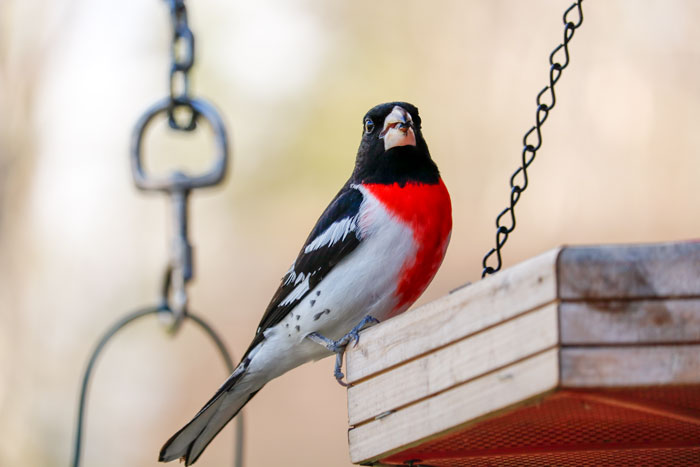
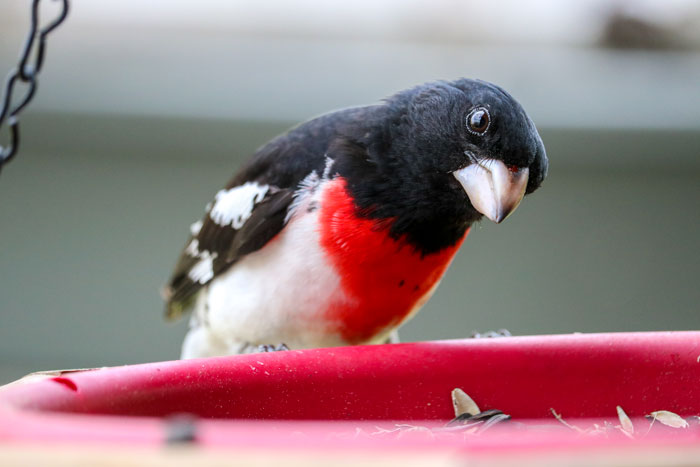
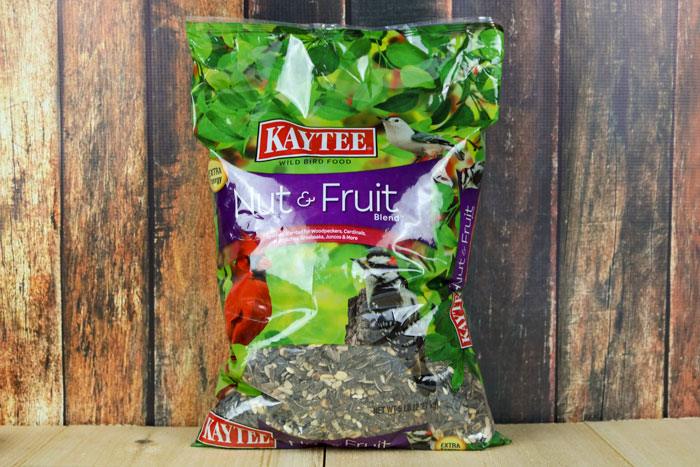
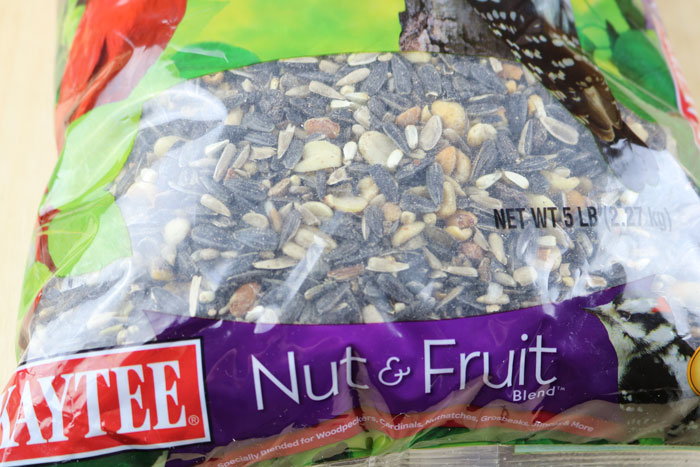
The Kaytee Nut & Fruit Blend is quite expensive and I use this sparingly and use the black oil sunflower seed and other mixes as a base in my tray feeder.

I usually purchase the Feathered Friend Black Oil Sunflower Seeds, but due to the current circumstances, I was only able to get this bag of Royal Wing Black Oil Sunflower Seeds. I don’t think the birds mind much at all and things have been fine so far.
I also added this Snacks ’N’ Treats Single Serving Hanging Bird Feeder. This feeder is smaller than other feeders, but it is a nice size for putting out dried mealworms and jellies.


These Kaytee Wild Bird Food Dried Mealworms have been a big hit with the black-capped chickadees and warblers.
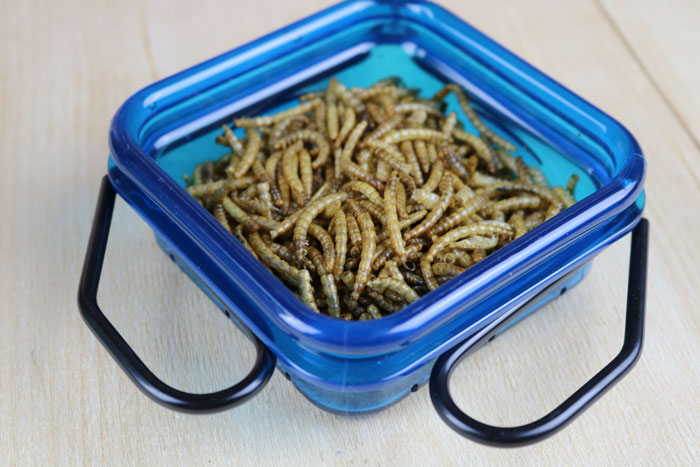
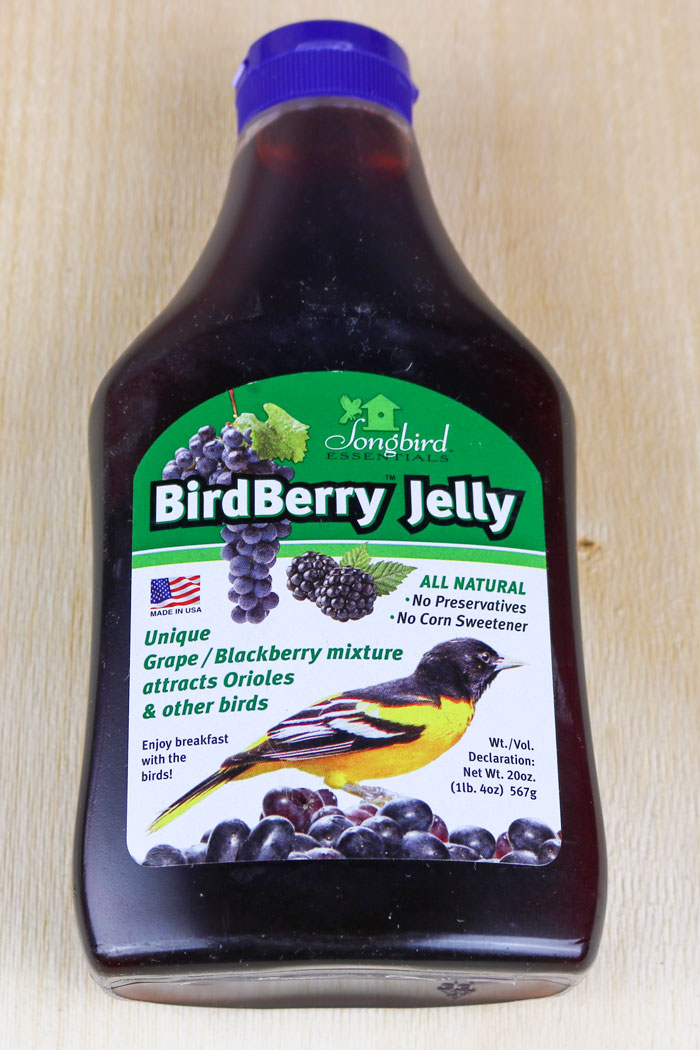
I ordered Songbird Essentials BirdBerry Jelly and I haven’t had much luck. It is supposed to be a little healthier for the birds being that it doesn’t contain corn sweetener or added preservatives. I bought this for the orioles and it seems like I can’t get synced up with their arrival. I’m not sure this is because we still had snow a couple of weeks ago, the fruit tree blossoms weren’t out, or because I was bringing the food in at night. I’m also not sure if it was too cold or perhaps the orioles still have yet to make an appearance this spring here in my neck of the woods. The other birds don’t seem to be interested in trying it. I will wait a little longer or perhaps, I will be maybe enjoying this myself in my breakfast!
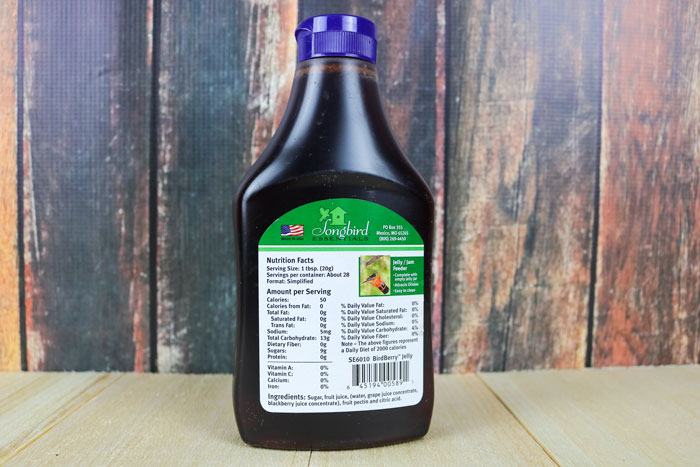
Suet Feeders
Suet feeders can be hung from poles and trees. The most common are the caged feeders. Suet comes in a variety of flavors and you can find which kind your birds prefer the most. I have had great success with suet and the birds enjoy it throughout the year. Suet is a wonderful energy source, especially during the winter months. It is important to remember when using suet in warmer temperatures it can go rancid. To combat this, you can try putting out fewer suet cakes or cutting them up and putting the unused portions in the fridge. This can get messy though. You can try refrigerating them first to see if this makes them easier to handle and cut. Some varieties hold together better than others. With suet, you will attract species of birds such as woodpeckers, nuthatches, wrens, and even some unexpected bird visitors such as warblers.
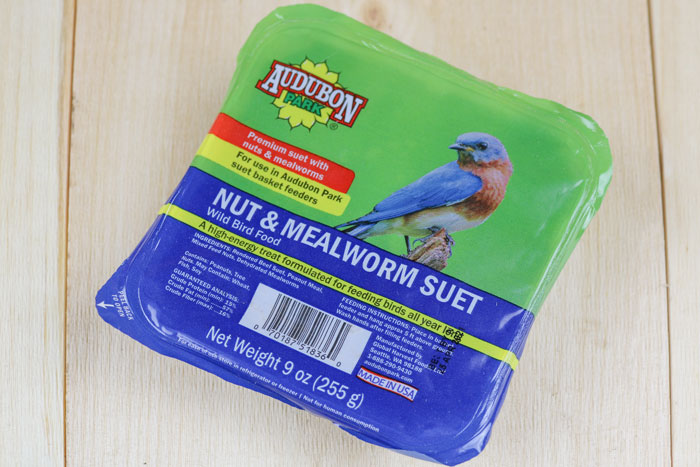
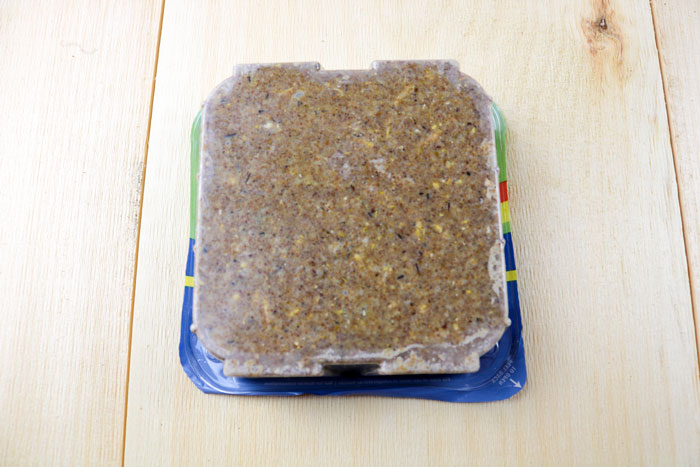
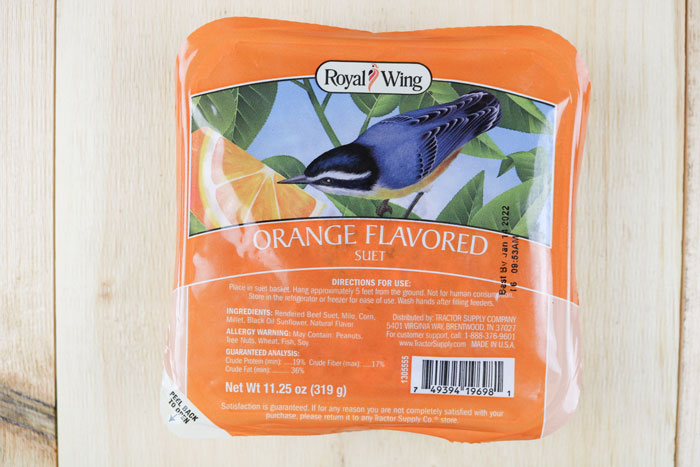
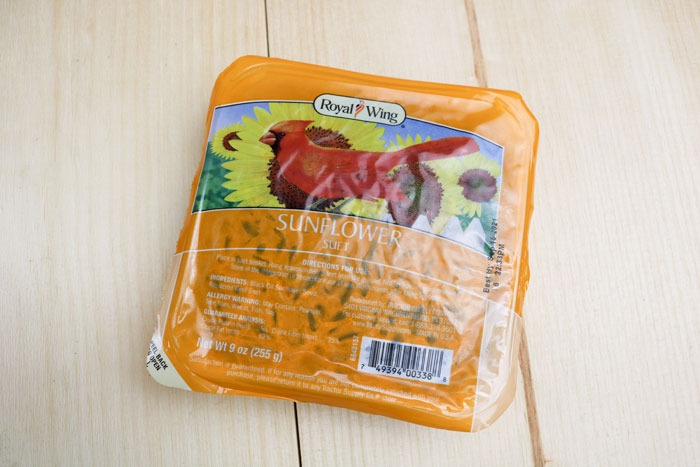
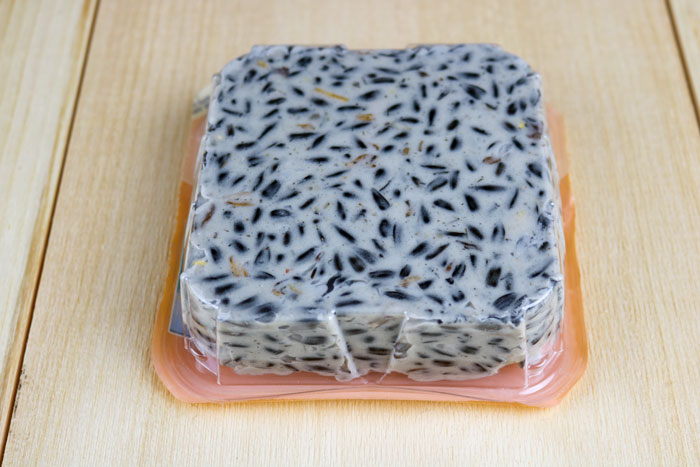
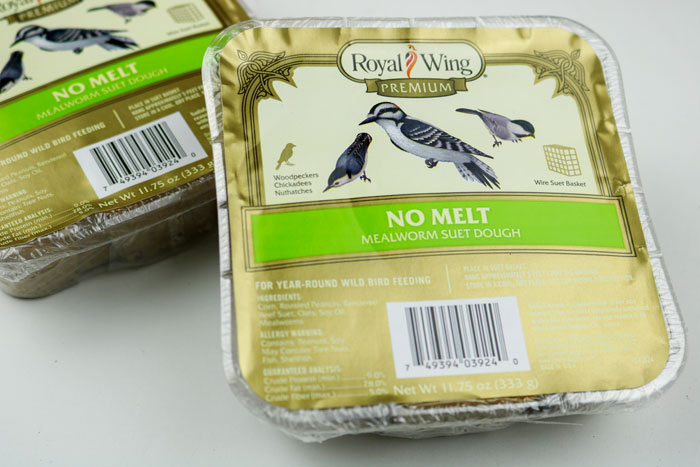
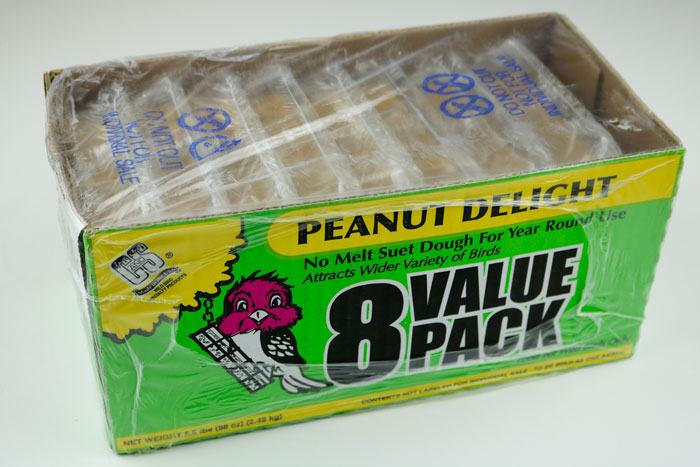
I have been stocking up on this staple suet. With making fewer visits to the store, I wanted to make sure I had enough suet on hand.
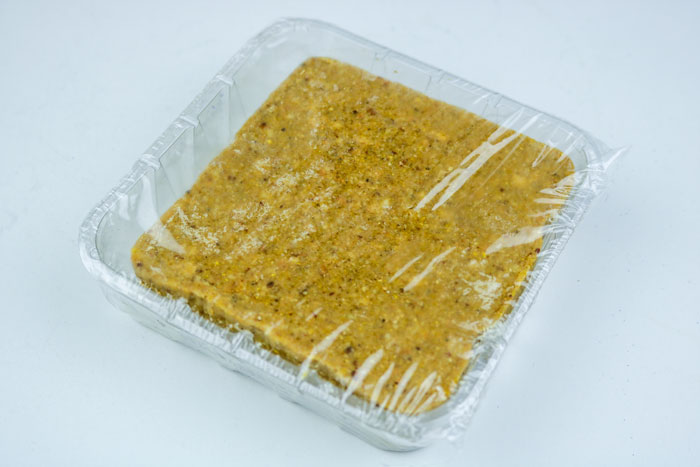

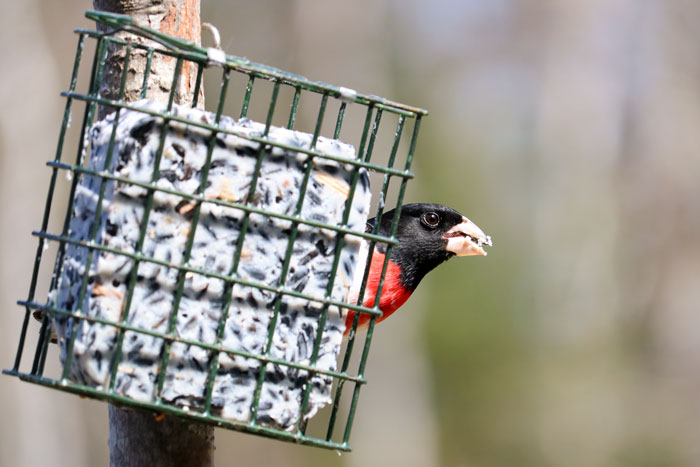
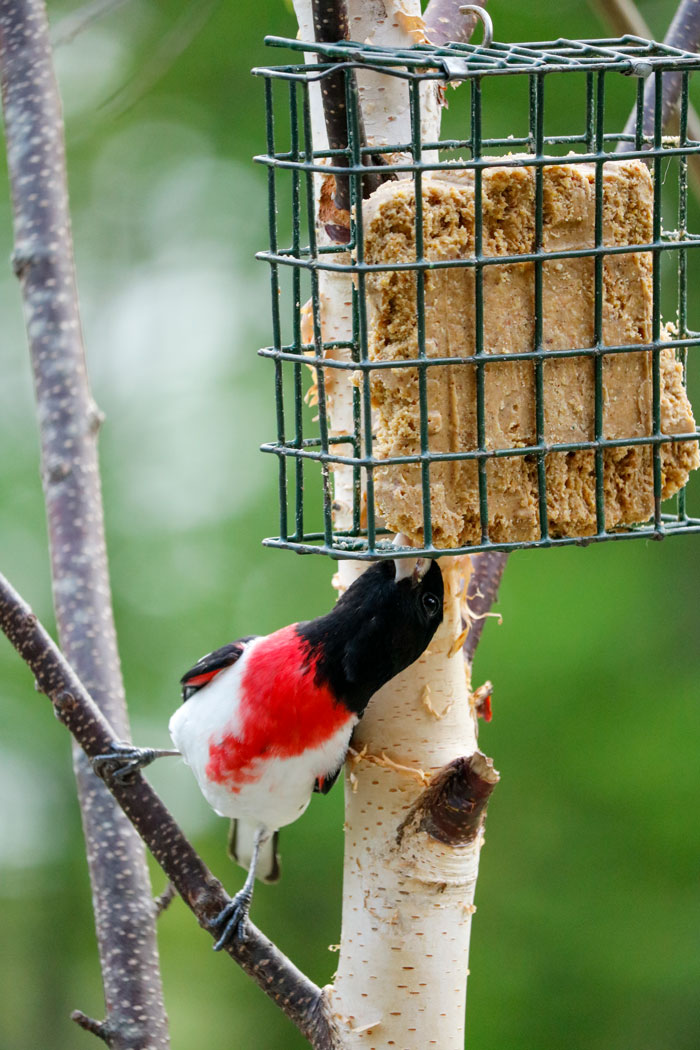
Cylinder Feeders
Cylinder feeders are a great way to offer a variety of bird foods for perching and clinging birds. These feeders will appeal to small and large birds such as chickadees, finches, titmice, grosbeaks, and nuthatches.
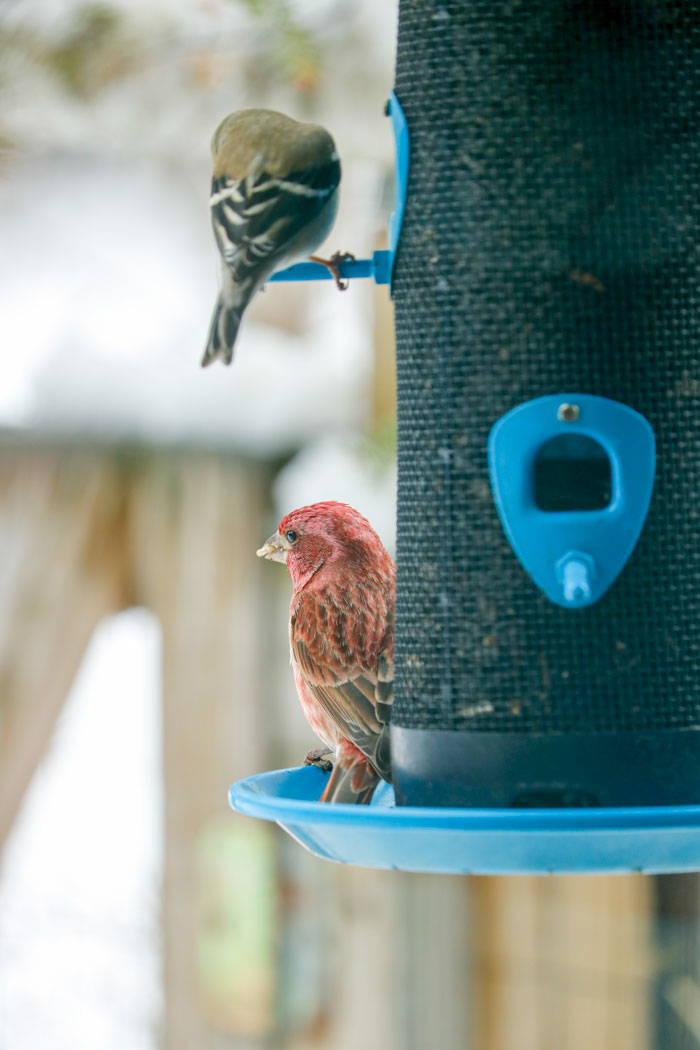
I thought this C & S Wildbird Nugget Feeder and bag of C & S Peanut Suet Nuggets would become a favorite with the birds. The black-capped chickadees and woodpeckers are enjoying this new feeder and food quite nicely. I think this will also make a nice addition to feeding the birds in the winter as a helpful energy source as well. You may find these nuggets can possibly be a better alternative for you as far as being an addition or substitute for suet cakes as well.
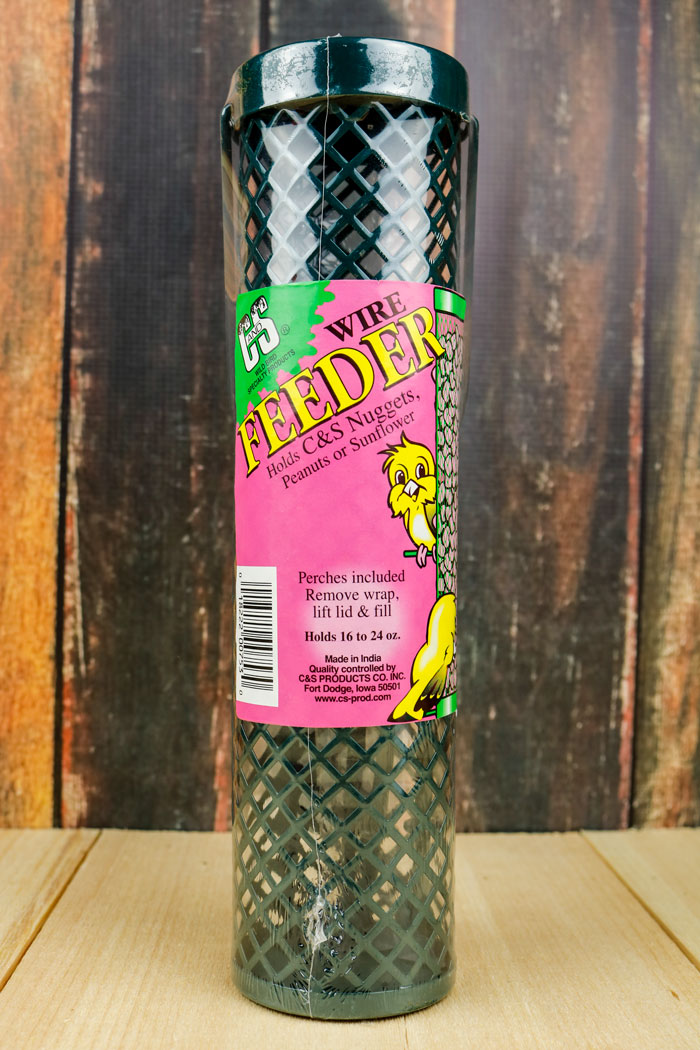
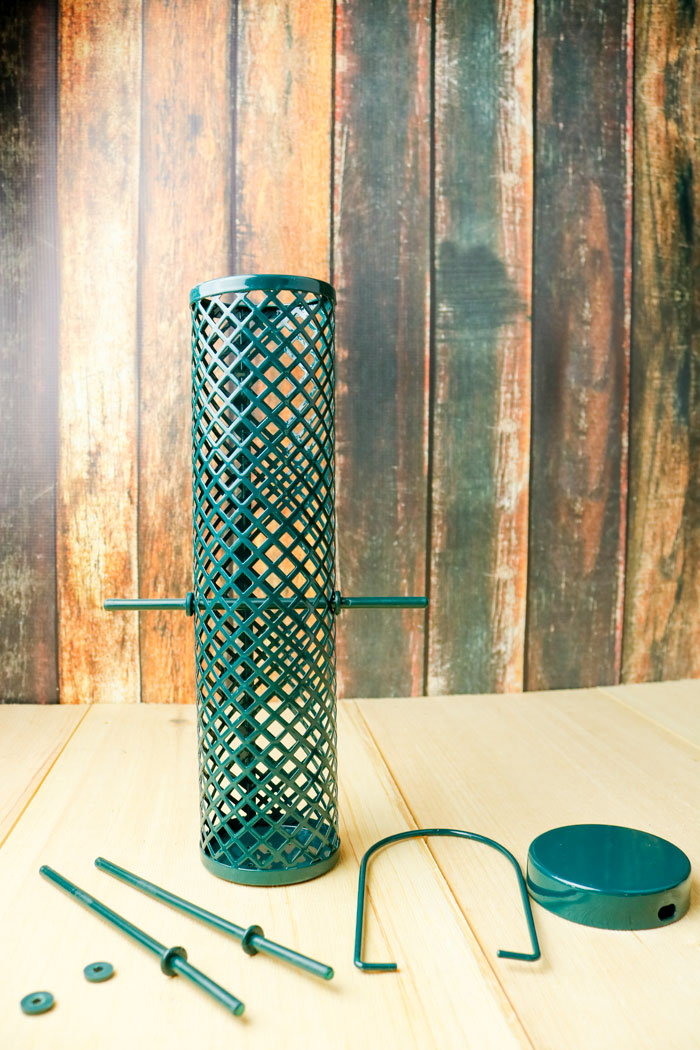
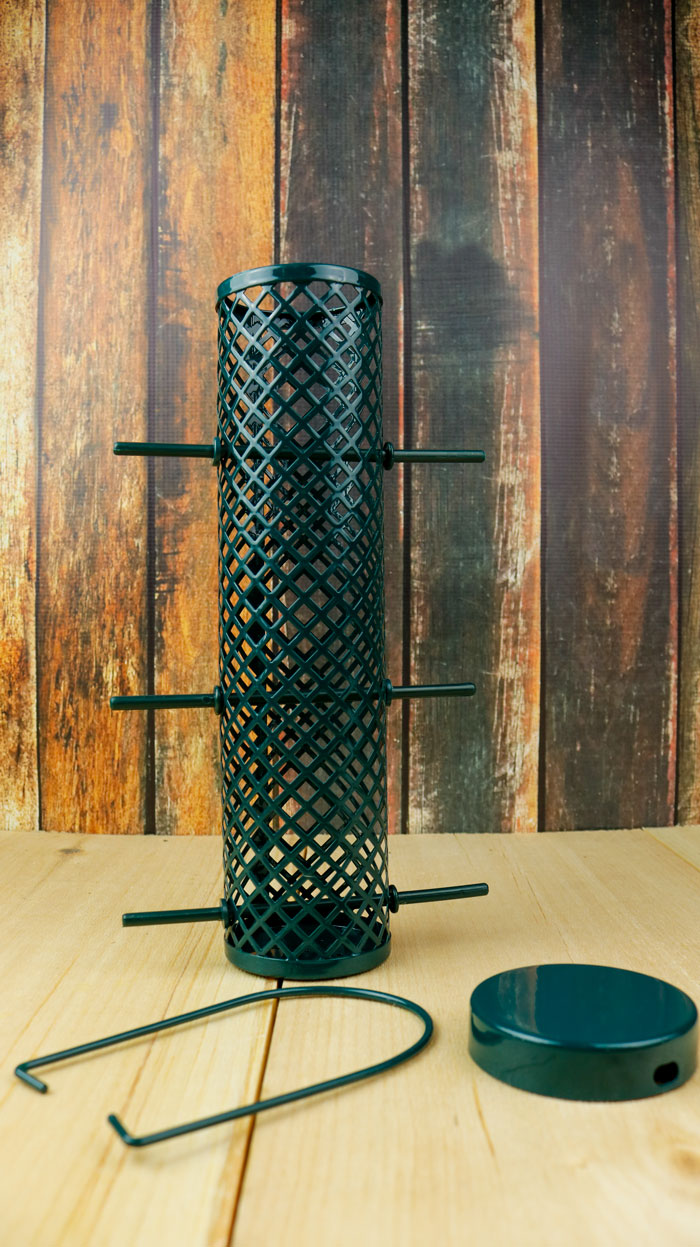

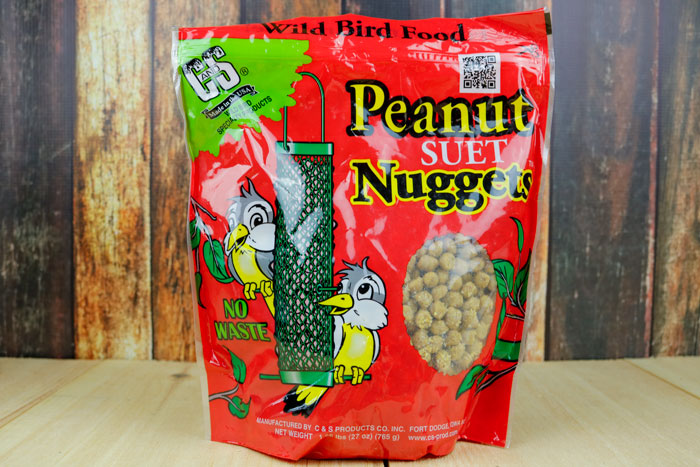

This black-capped chickadee was my first customer.
Here is a video of a male hairy woodpecker enjoying this feeder:
Recently, I also purchased this Heath Owl Seed and Suet Bird Feeder. I thought it would make a nice addition as it combines the best of both worlds of a seed and suet feeder combined. I haven’t tried it yet due to my squirrel/chipmunk issue, but I’m sure the birds will enjoy it in the near future.

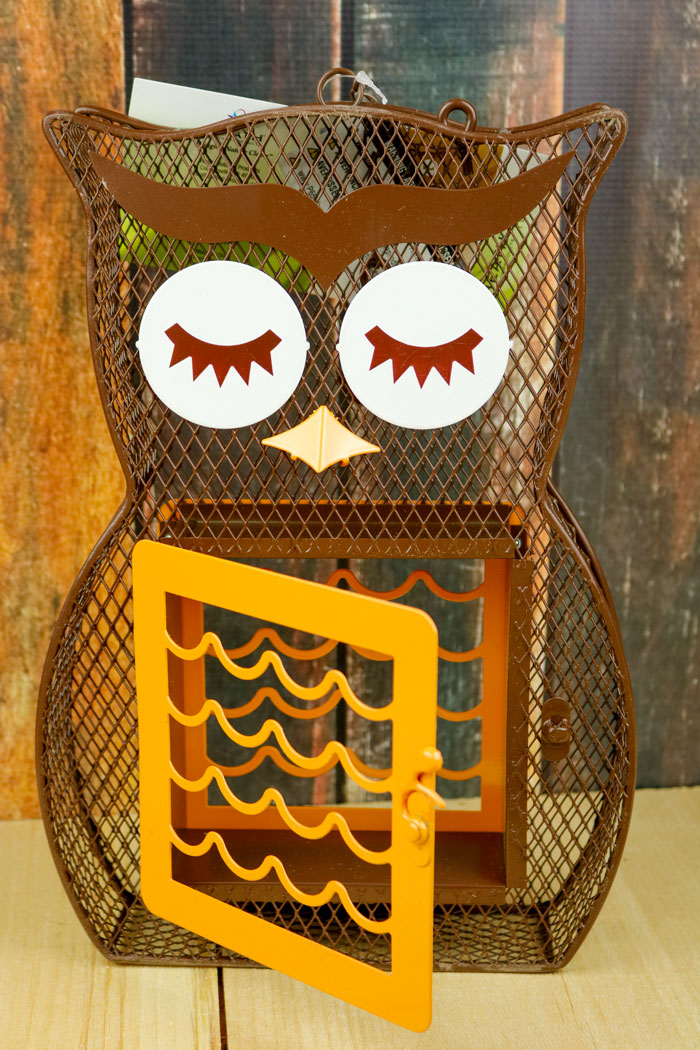
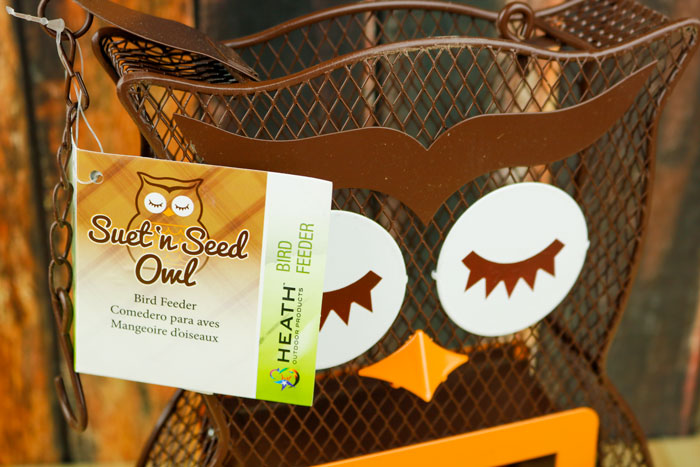
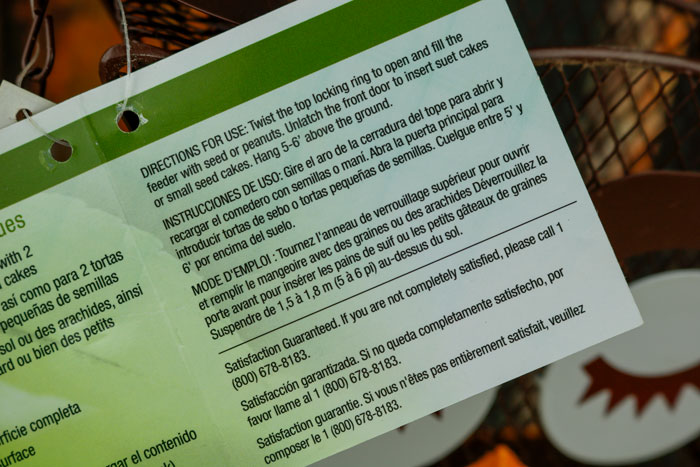
Here is a video of the birds enjoying this feeder:
Nyjer Feeders
Nyjer feeders are popular among finches, especially American goldfinches. Nyjer seeds are minuscule and make both a cost-effective and per-pound price for your bird-friendly habitat. Feeders either come as mesh socks or tube feeders. These specially designed feeders allow birds to cling upright or upside down the sides while feeding.
I have tried both the mesh sock and tube feeders. The birds enjoyed the Kaytee Mesh Sock Feeders until the Eastern gray squirrels got a hold of them and that was that. These feeders cannot be repaired and I had to throw them out. I then purchased a Stokes Nyjer Tube Feeder and this has been a real winner with the birds. I use Wagner’s Nyjer Seed and I am constantly refilling my feeder. The squirrels don’t seem to be attracted to the feeder or the food and I have been able to keep this one outside all of the time. I have American goldfinches, sparrows, black-capped chickadees, pine siskins, and grosbeaks feeding on it.
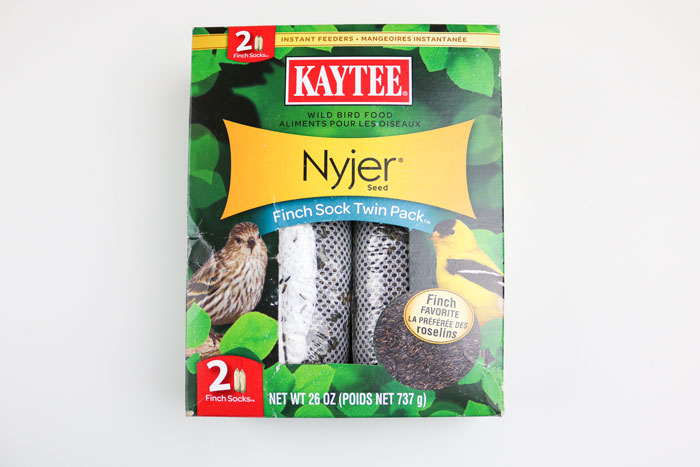
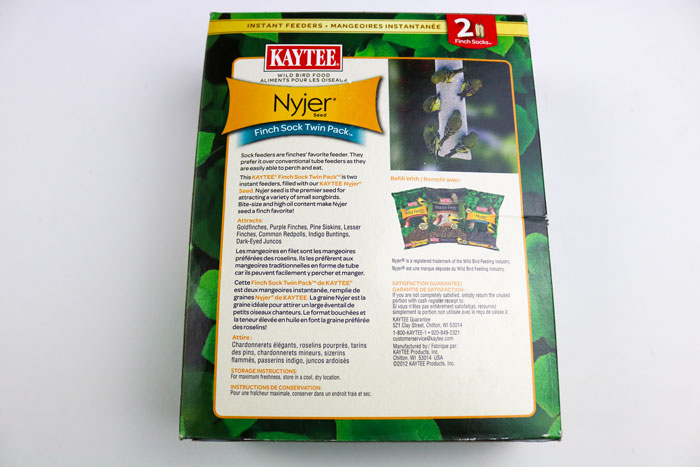
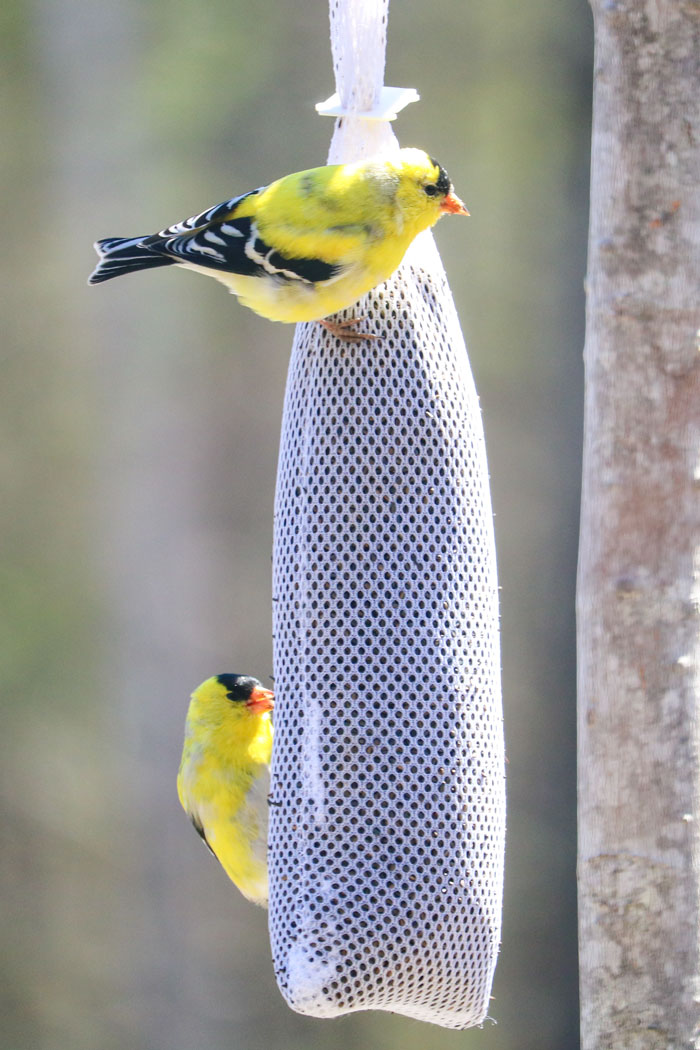

Here is a video of American goldfinches enjoying their new feeder:
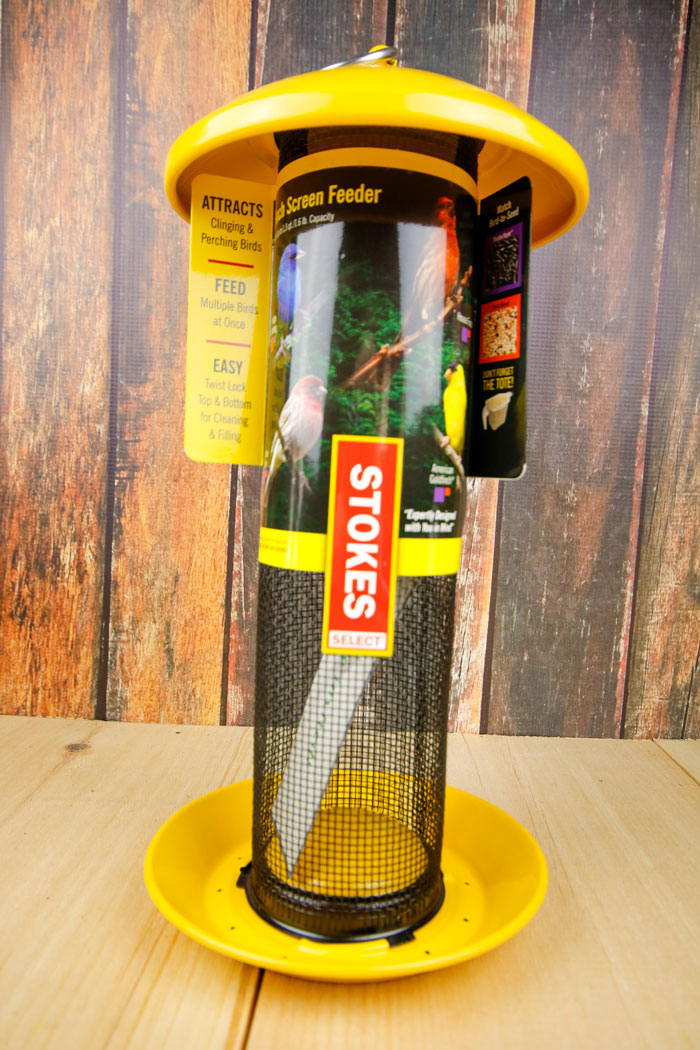
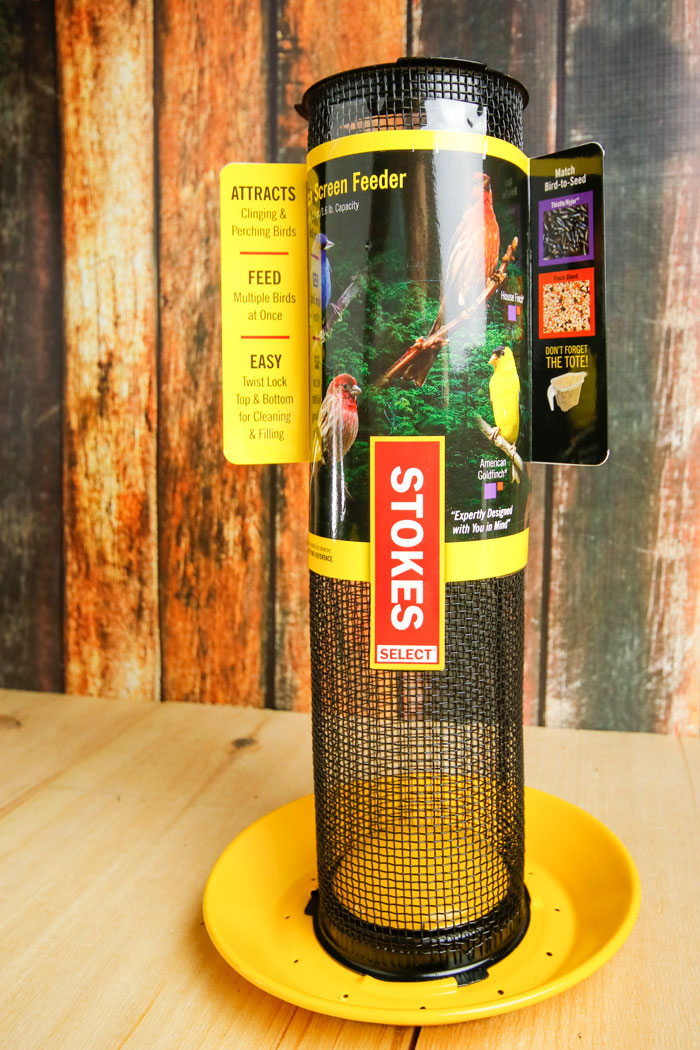
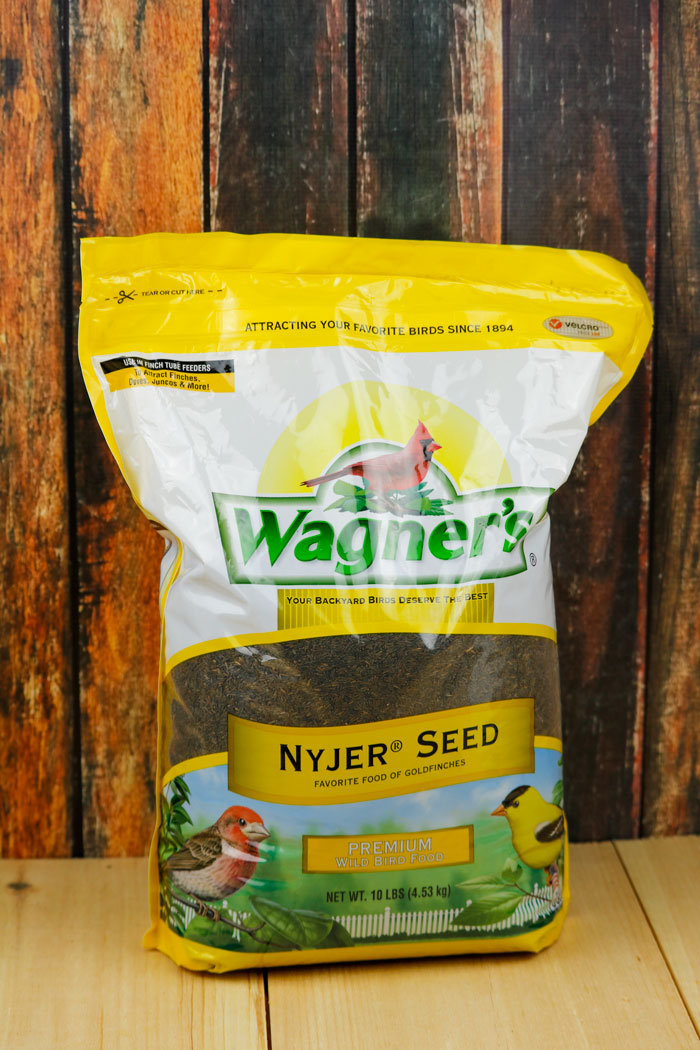
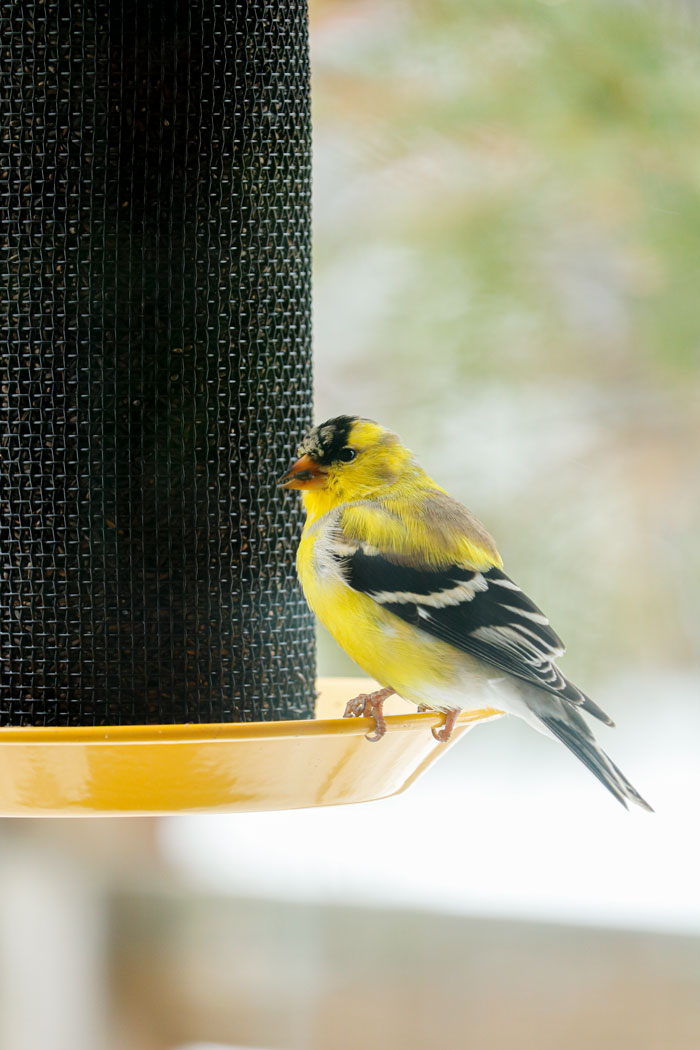
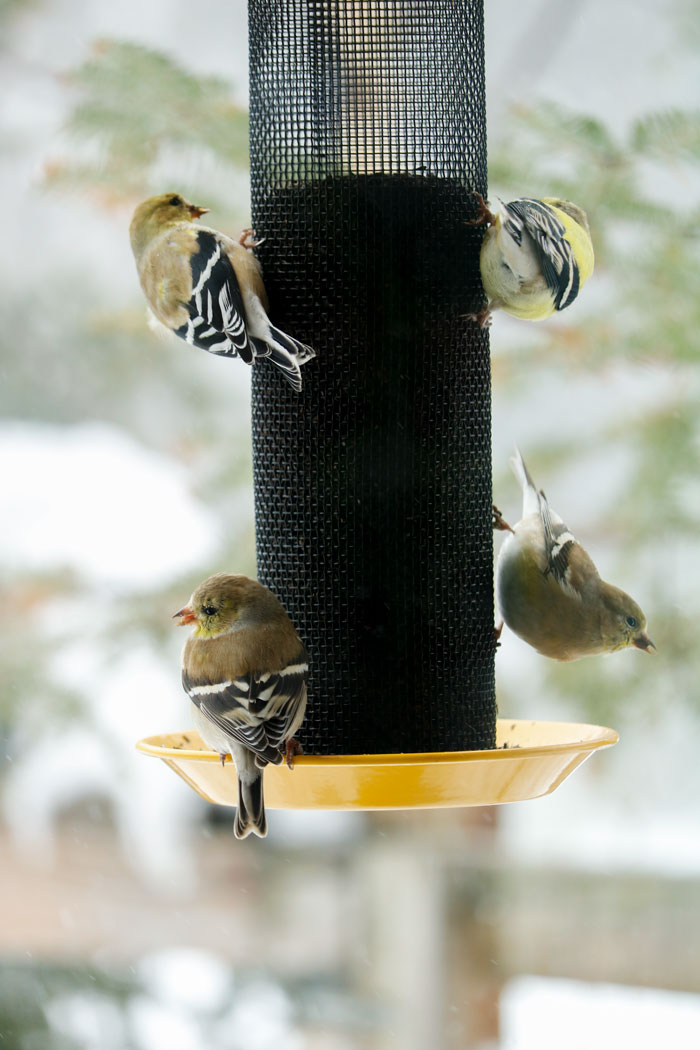
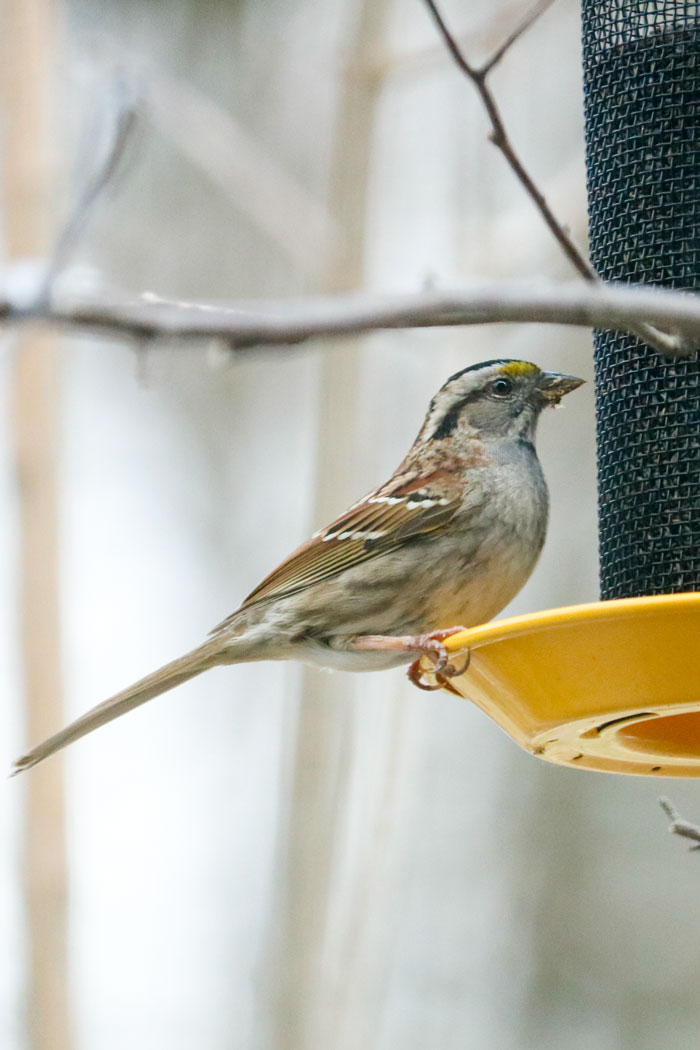
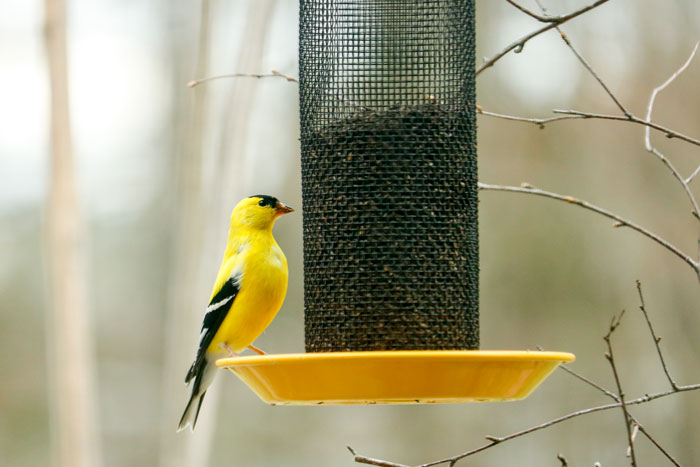
Also, here is a video of pine siskins enjoying the feeder as well:
As a side note, make sure to place your feeders in the proximity of a tree or bushes in order for the birds to escape in case a predator should come into the area. Also, you can spread your feeders out and clean them frequently and thoroughly in order to minimize the spread of disease. I usually clean my feeders at least once a month, sometimes more frequently. I use a bucket and fill it with water and four cups of white vinegar. I give them a good scrub and then let them soak for one hour. I rinse the feeders and leave them out to dry in the sun.
If you find that your current feathered friends aren’t taking to anything new, just give them a while. They will come around and realize that some change in their environment is a good thing.
Don’t Forget About the Hummingbirds
Who doesn’t enjoy watching hummingbirds? If you have hummingbirds in your area, why not provide these little guys with their own feeders. It is quite simple to make your own hummingbird nectar at home. Directions include:
1. Mix one cup of sugar with four cups of water and bring it to a boil to kill any bacteria or mold present. 2. Cover and let cool and then fill your feeders.
How simple was that? This is especially beneficial to hummingbirds after their spring migration. Here in Maine when these birds arrive, not all of the flowers have bloomed and there are limited insects available. They are looking for added nutrients in their diets and you can provide this benefit. I have added two new hummingbird feeders to my collection. An Aspects Mini HummBlossom Hummingbird Feeder and a Nectar Dots Feeder.

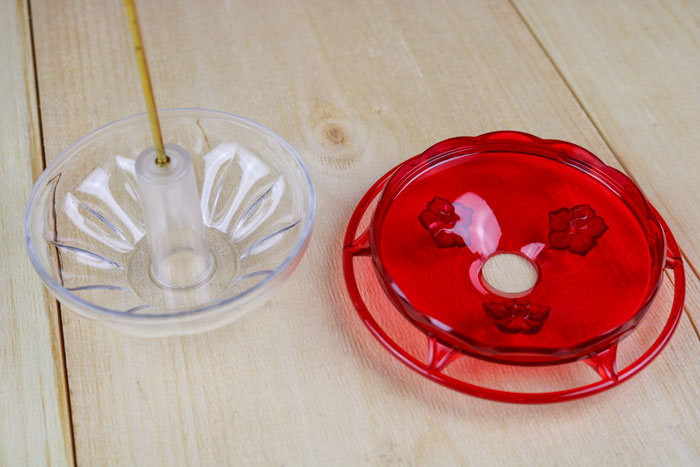

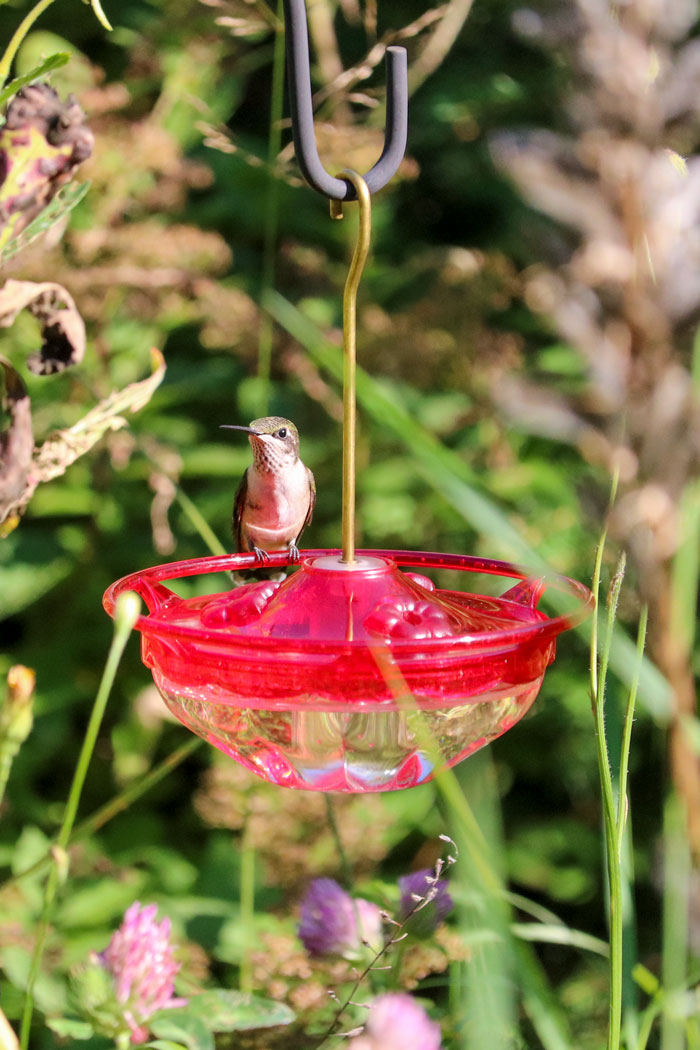
I put this hummingbird feeder in the flower garden and they enjoy this immensely. It is on the smaller side, but it is easy to clean and keeps them happy.
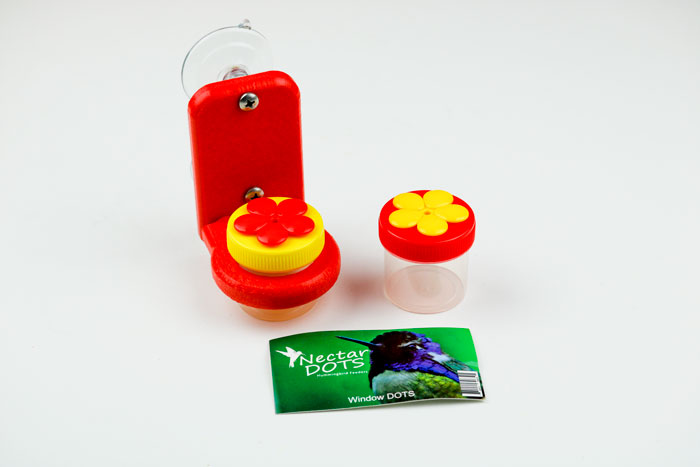
I wanted to try to see if I could try to hand-feed the hummingbirds this year. What I like about this feeder is that if the hummingbirds aren’t willing to feed out of my hand with the nectar dots, at least I could still use it as a regular feeder. The suction cups are very strong for this window feeder and I’m confident it won’t be coming off the glass anytime soon. They are enjoying it so far and we will have to see what happens with the hand-feeding this season.
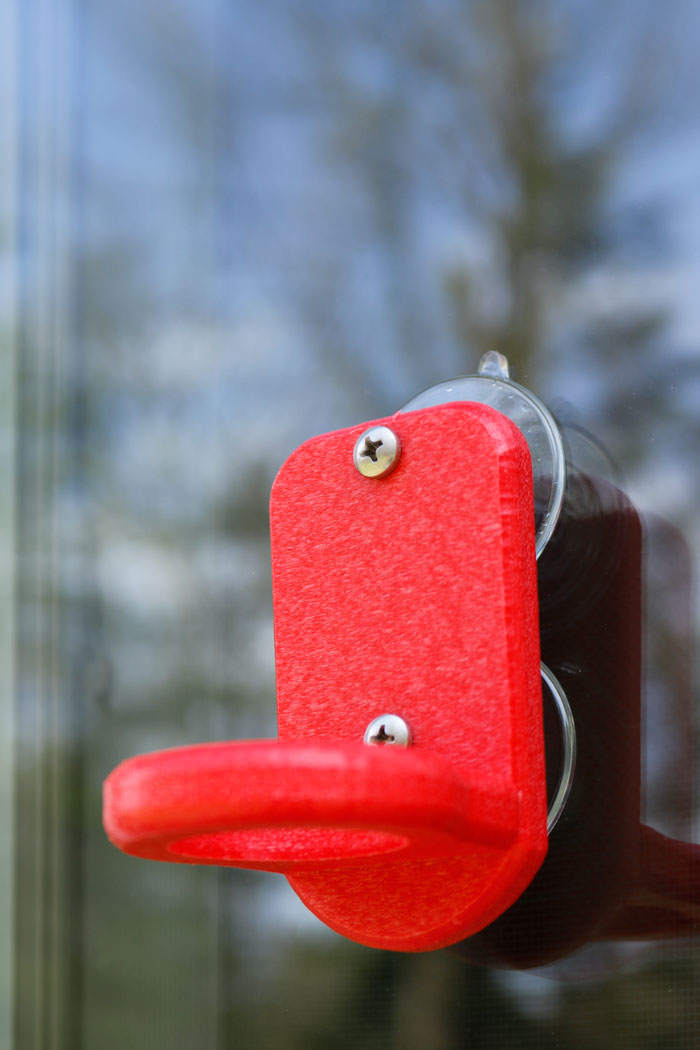
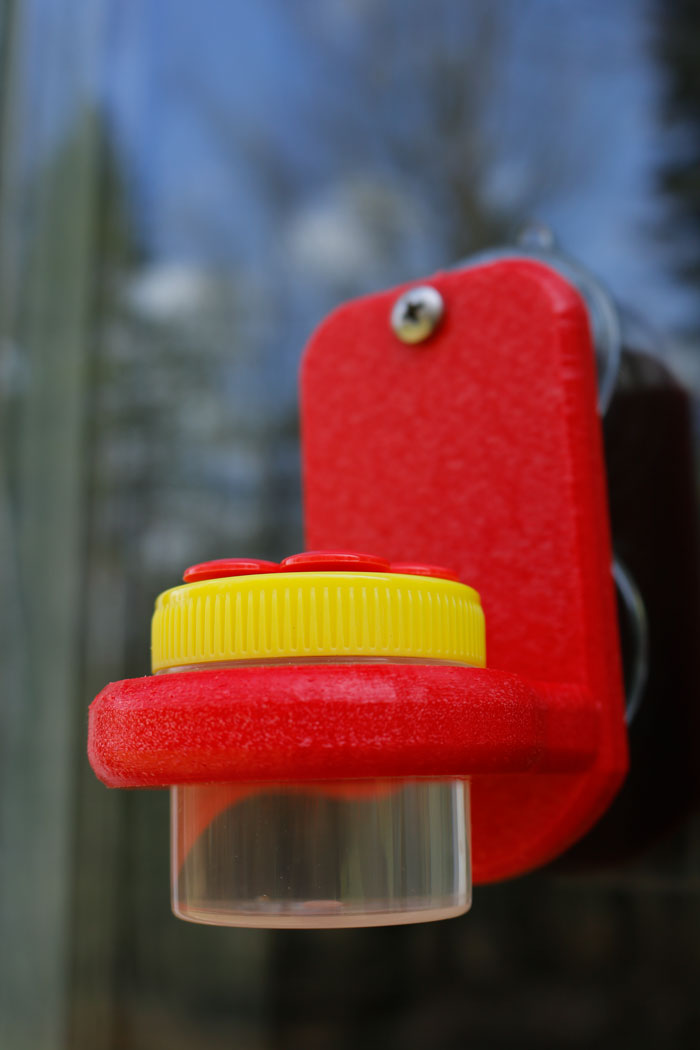
Instructions for Cleaning Your Hummingbird Feeders:
I prefer to use white vinegar over harsh soaps for cleaning hummingbird feeders. Vinegar is a nice alternative and it contains anti-bacterial properties. Fill your feeder with two parts water to one part vinegar and let soak for several hours. Be sure to rinse and let dry thoroughly before filling with nectar.
To bring me to my next point, also consider planting flowers, flowering plants, and trees in order to provide even more sources of food for your hummingbirds. Dense areas of vegetation in your yard will also encourage hummingbirds to nest. Wouldn’t that be something to see!
Plant a Variety of Flowers, Berries, and Seeds
If you are looking to update your yard, why not include a variety of beneficial flowers, berries, and seeds. Many flowers can provide food sources for birds that will become seed-heads ripe for the taking in the fall. If you have success with your spring plantings, make sure not to deadhead your plants after the summer. This will leave a nice amount of seeds for the birds. Also, when planting berries, make sure to choose varieties that will keep their fruit into the winter.
We have blackberries, blueberries, and raspberries bushes growing in the yard already and I wanted to add more varieties of berry bushes. I recently purchased two of each winterberry, Juneberry also known as serviceberry, and black chokeberry seedlings. These are all native to the area and beneficial to the birds. I hope to attract a wider variety of birds in the future. It will take them a while to grow, but I will have to be patient.
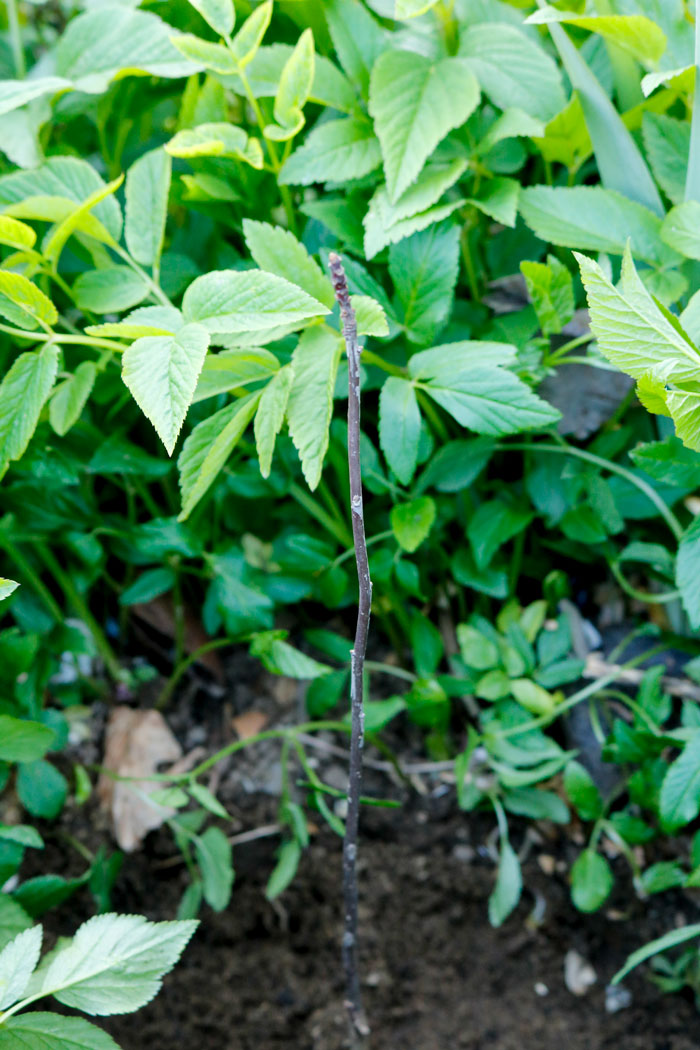
The fruit of the winterberry is consumed by at least forty-eight species of birds, in particular, the American robin.
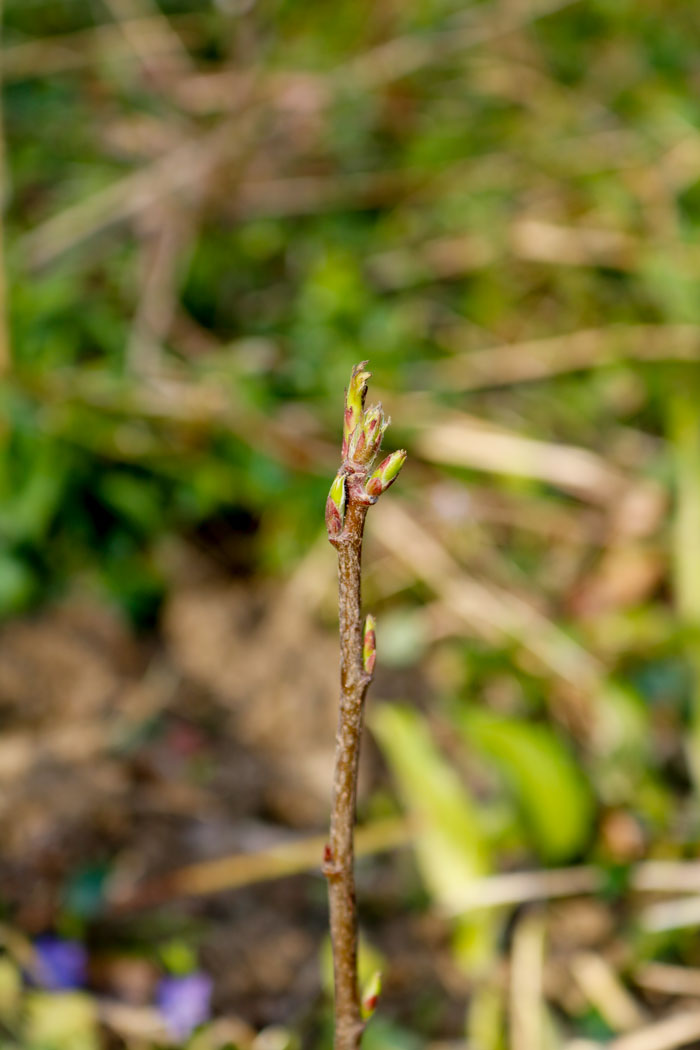
The fruit produced by the Juneberry or serviceberry is eaten by at least thirty-five species of birds and is a favorite of Baltimore orioles, brown thrashers, catbirds, and rose-breasted grosbeaks.
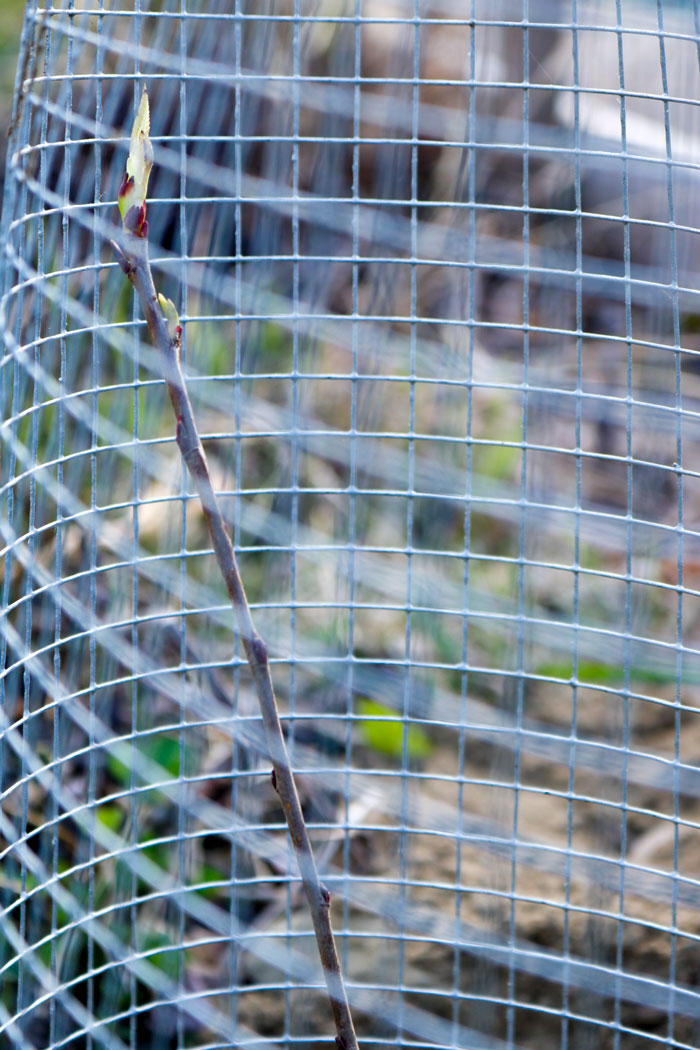
The black chokeberry attracts many songbirds as well as game birds such as ruffed grouse, sharp-tailed grouse, and prairie chickens. By the way, this cage will hopefully deter the deer and rodents from eating this seedling. Eventually, I will get around to making cages for the rest of the seedlings. Hopefully, if they take off and thrive, I will attract even more species of birds to my yard and that means more exciting photographs, too.
As far as flowers go, not only will hummingbirds enjoy them, but several pollinators as well. When we moved here to our home, there were already a nice variety of flowers and flowering trees growing in the yard. These included bee balm (a hummingbird favorite), phlox, iris, roses, and several others. I have since added lavender, lupine, sunflowers, lily-of-the-valley, edelweiss, coneflowers, and several other wildflowers, too. This year I hope to plant salvia, lambs ear, alyssum, aubrietia, and globe thistle. As far as flowering trees go, we have mature apples, crabapples, and peach trees. We are hoping to add more in the future.
A couple of years ago, we planted six lilac bushes, and this year I planted a hydrangea. A few of the lilacs are coming along nicely. The deer and rodents have helped themselves to a couple, so they will also get cages, too.


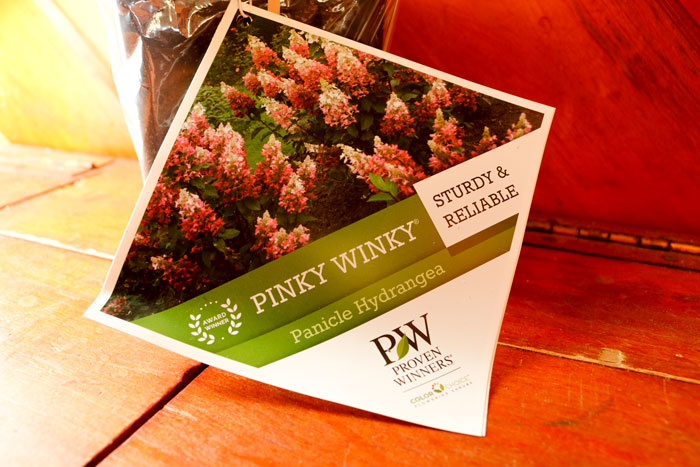
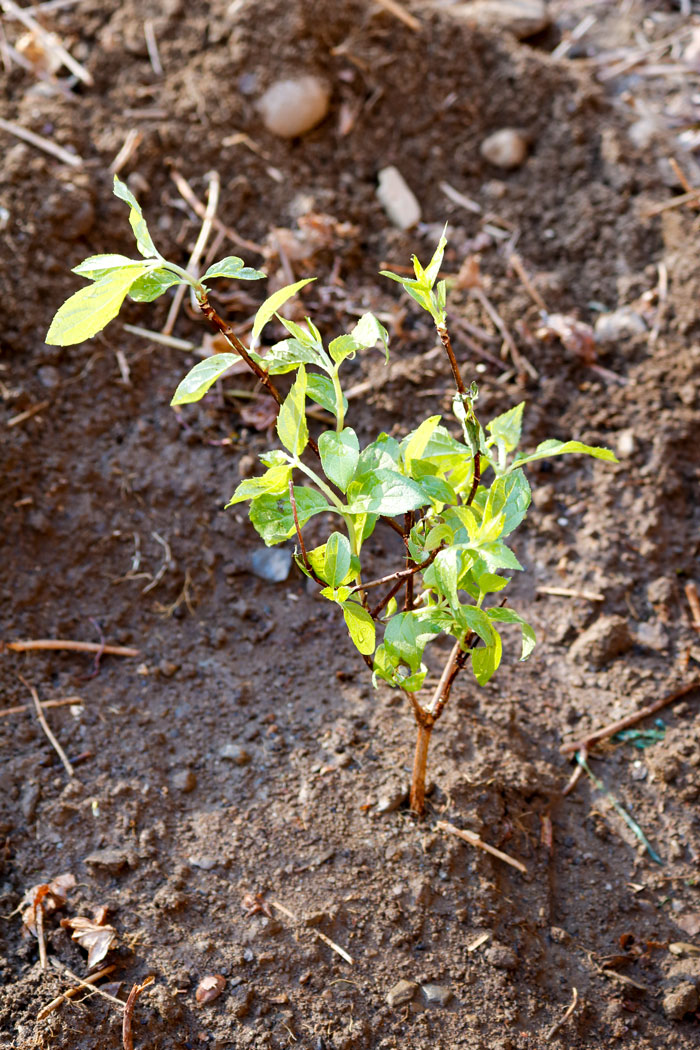
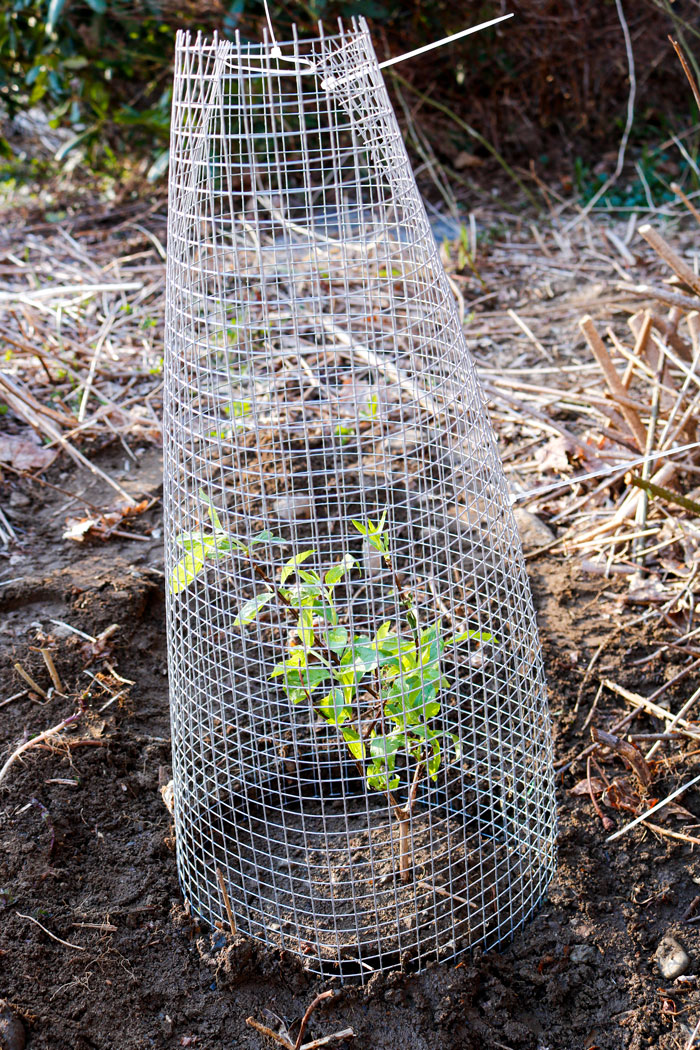
Things are coming along nicely and I hope to attract even more species of birds in the near future. It is also important to remember vegetation in general also provides protection from predators and beneficial areas for nesting. Feel free to do your own research and find which plants and trees would work well for your growing zone.
Set Up Bird Houses & Nesting Boxes
If you have taken note of the species of birds you have in your area, why not provide birdhouses or even better, nesting boxes. By doing this, you may encourage them to stick around for the spring. Do your own research and find birdhouses or nesting boxes appropriate for the sizes of birds you hope to attract to your yard. Requirements should include a way to shed rain, drainage for the bottom of the box, and protection from predators attempting to consume eggs and young birds.
For years, I have debated whether to make my own nesting boxes or just purchase them. Well, I went with the latter. I found a great seller online and his prices were reasonable. I ended up purchasing three nesting boxes from him that included a bluebird box, a wren box, and a chickadee box. They are quality-made cedar boxes that came with screws and instructions. They were simple enough to hang and they open easily for cleaning. If you are interested in these you can find these wonderful nesting boxes by Randy Creed on eBay. I also like that they have extra wood around the entrances for helping to prevent predators from entering easily.
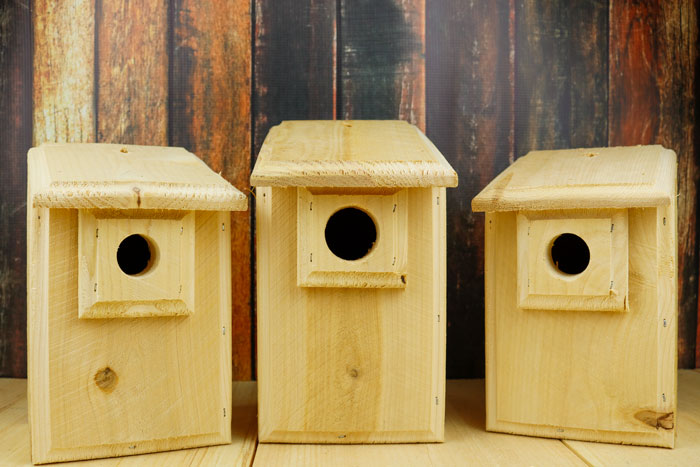
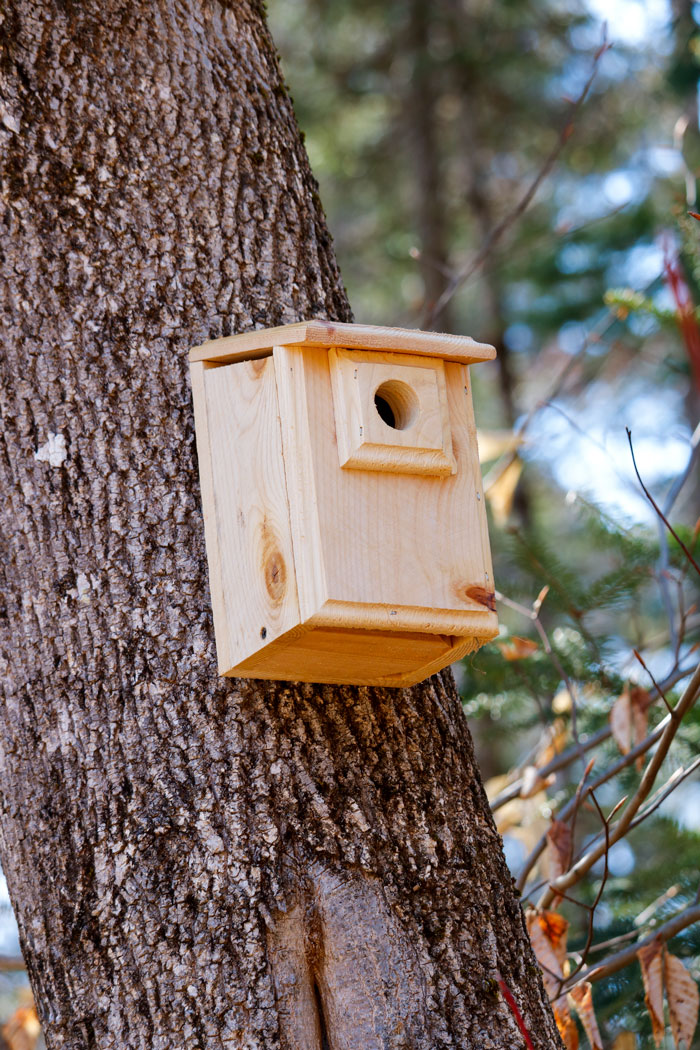
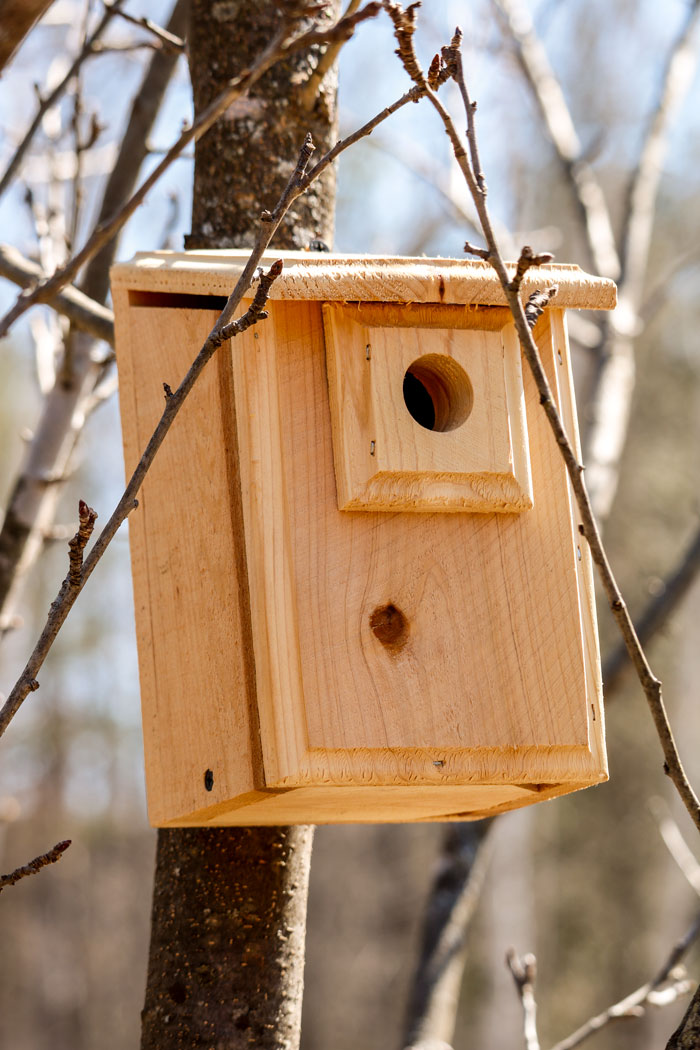
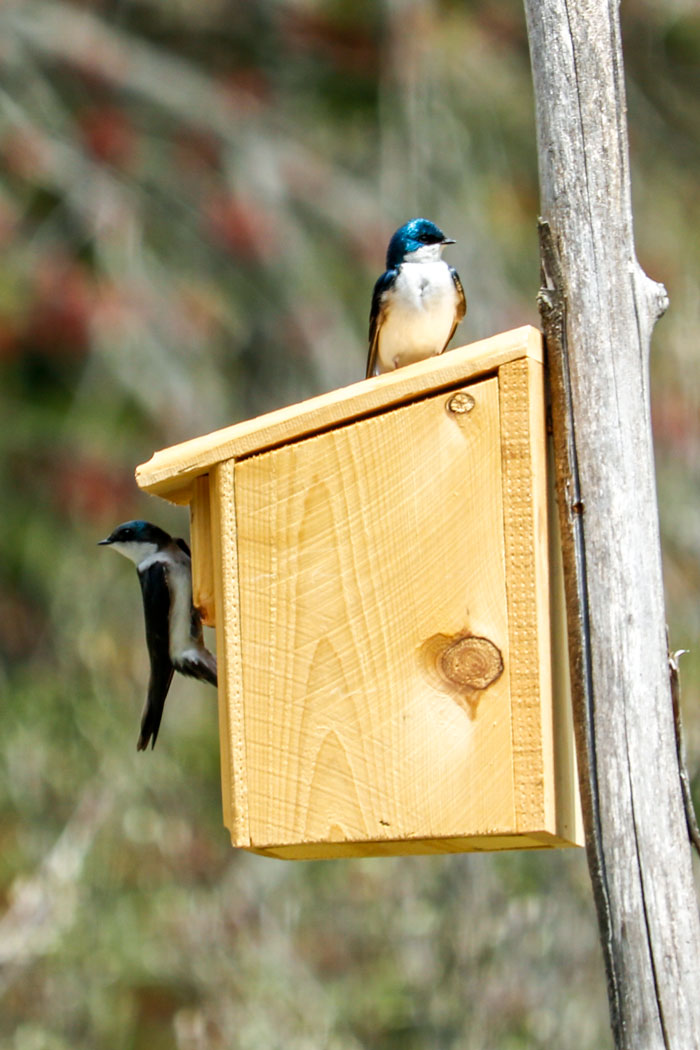
Although I was hoping for bluebirds to nest in this box, I have had two interested tree swallows. They have been returning to this box for a few days now and I can’t wait to see what happens next. I am patiently waiting to see who will nest in the other two boxes.
A few birthdays ago, I received a Woodlink Wood Duck Nesting Box. I have seen both male and female wood ducks down near the pond in the yard. They have shown up a couple of years in a row and I am hoping they will show interest in using this box for a nesting site. No one has shown up yet, but I am keeping my fingers crossed.
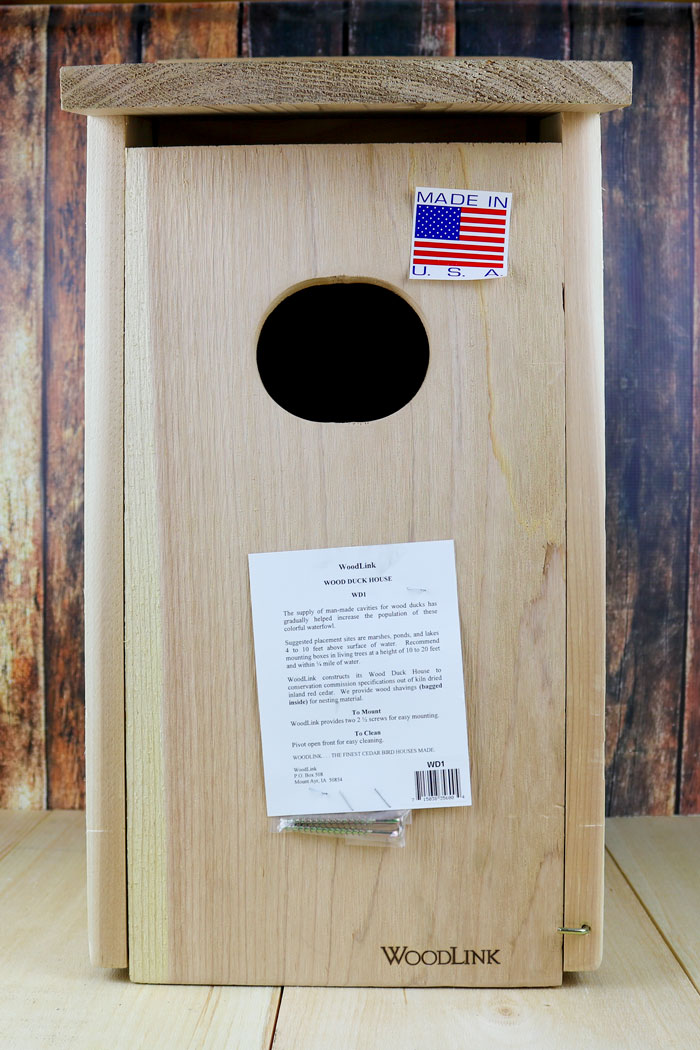
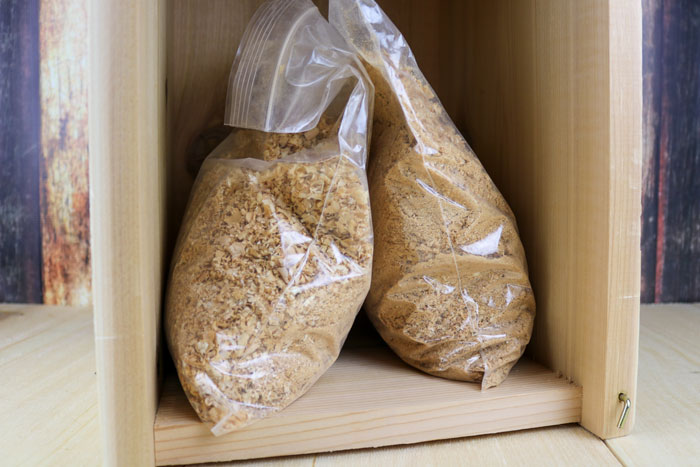

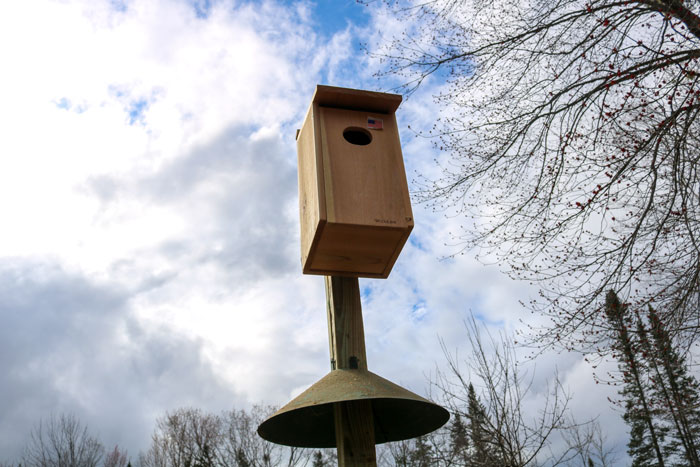
Birds will often nest from March until the end of July. To learn more about nesting times for your birds, make sure to check the nesting window for your area.
Provide Nesting Material
After you have a handle on your bird box and nesting box placement, it is a good idea to provide your birds with a variety of nesting materials. Some of the best materials you can put out are wood chips, tiny twigs, dried moss, and your pet’s fur. You can put these materials out in a basket or an empty suet feeder. This spring, I have left fur on the lawn as well and attached it to the branches of trees. It has all disappeared and is being well utilized. I also put fresh wood chips in all of the boxes.
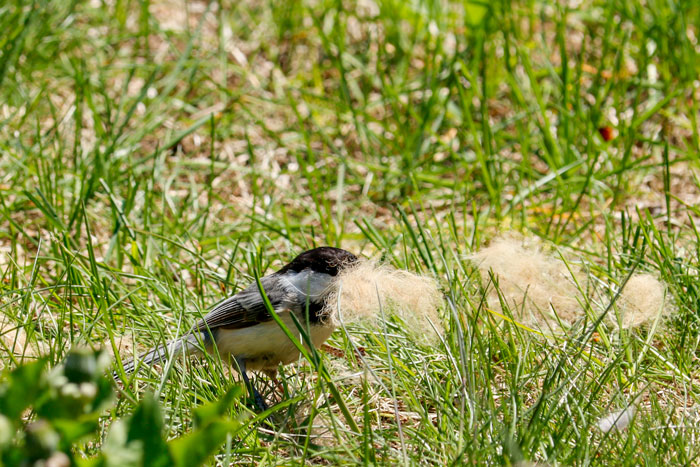
A black-capped chickadee gathering fur for its nest.
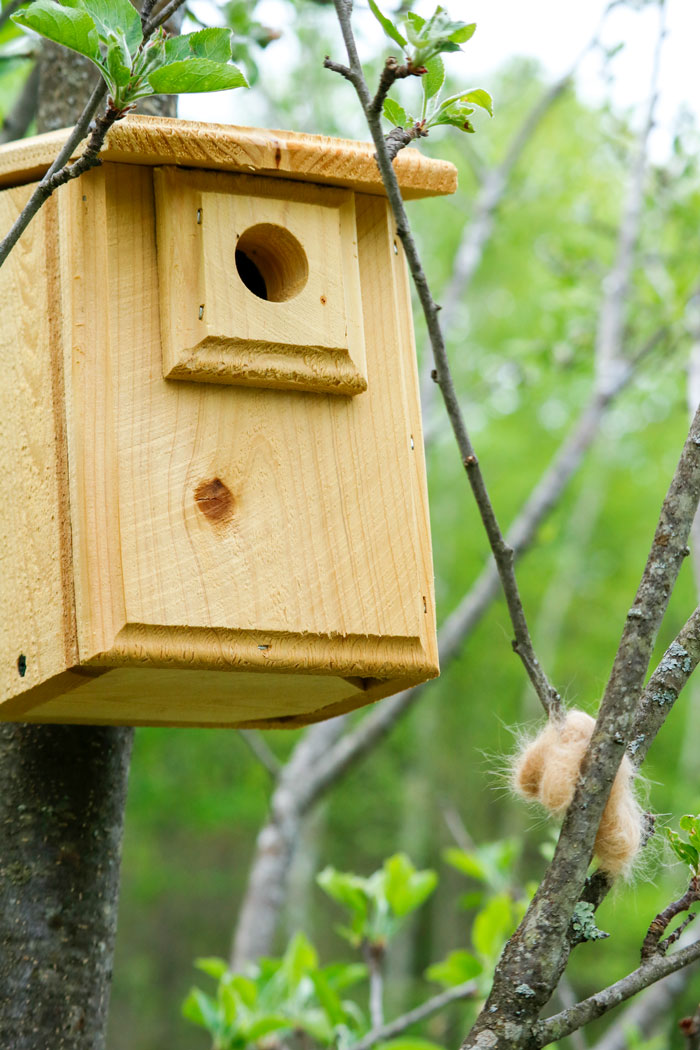
Here, I placed fur outside of one of the nesting boxes to entice someone to use this box for nesting. The fur was gone, but no nesting birds yet.
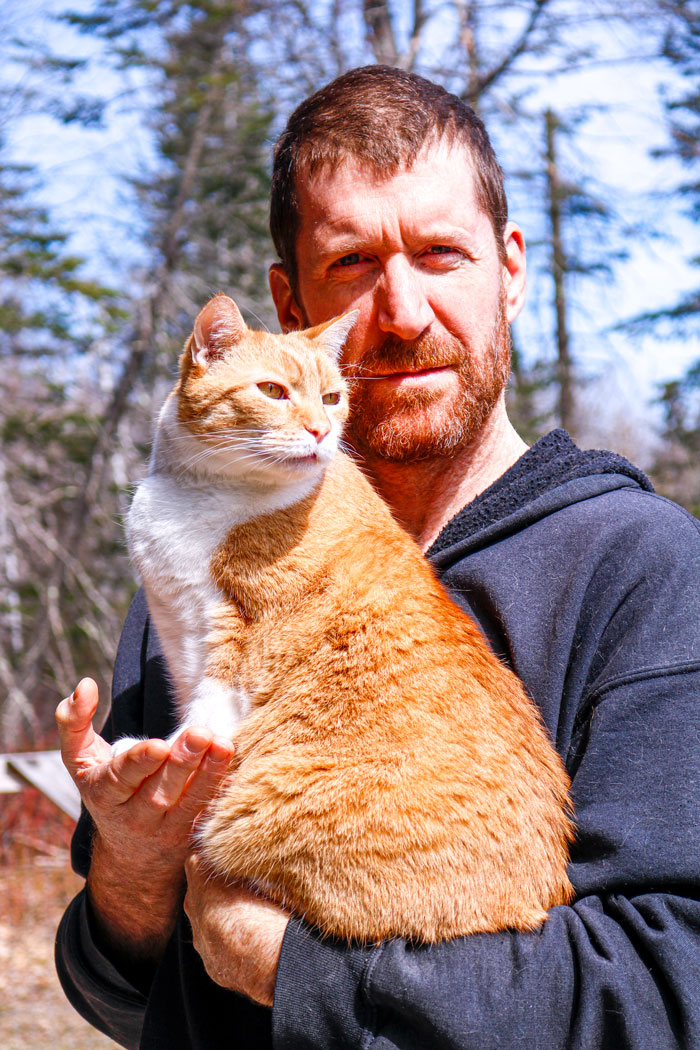
I would like to thank these handsome boys for doing their part in getting the yard ready for spring. The orange cat for donating his fur (of course, containing no flea or tick products) and my handsome partner for helping to hang my nesting boxes and for my wonderful duck house present.
Also, when preparing your nesting boxes for next spring, make sure to empty old nesting material. Birds will not use the boxes otherwise. If you find an old nest and you are sure it is old, you can go ahead and remove those, too. Those areas may be prime real estate for your new spring visitors.
Add a Water Feature
Last, but not least, make sure to provide your birds with clean water. Birds are at risk for dehydration after their long migrations. You can provide clean water in your yard or with water features such as birdbaths or water fountains. For the colder days and nights in spring, as well as the colder months in the winter, you can add a heated birdbath. Water is essential for the survival of birds. They will choose your yard for feeding and nesting when it is abundant in this resource.
I have yet to find a water feature that I like. My yard has plenty of natural water sources such as a pond, brook, and stream. I believe I have that area covered. I also use old glass dishes around my feeder and this seems to work out for everyone. The birds use these for drinking and bathing. I clean them with water and vinegar and I will continue to use these until I find something more permanent.
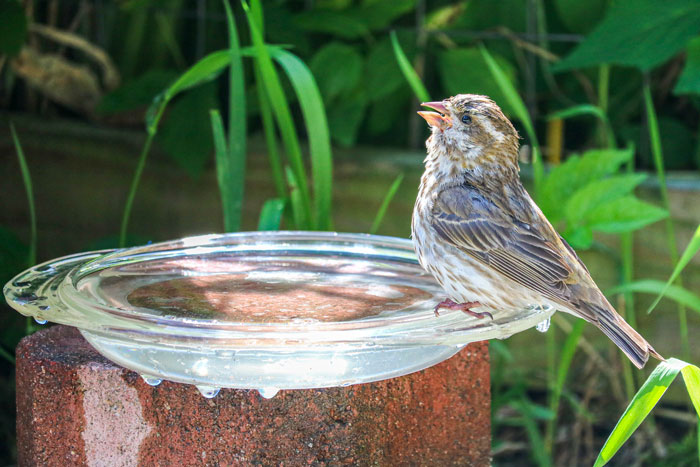
I hope you enjoyed reading this post and have had great success in creating your very own bird-friendly habitat for your bird visitors. If you have any questions or would like to share your own ideas and creations, please feel free to leave a comment in the section below. Thank you for reading and happy birding!
Leave a Reply